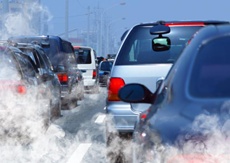Studies in US, India link PM2.5 pollution with unhealthy babies
28 Dec 2017
If the illnesses currently associated with breathing polluted air were not enough, a new study has revealed significant association between air pollution and birth defects.
 The study carried out this year and published in the Journal of Pediatrics found that women exposed to air pollution during the preconception period or one month after conception have increased risk of their children being born with birth defects like cleft lip or palate or abnormal hearts.
The study carried out this year and published in the Journal of Pediatrics found that women exposed to air pollution during the preconception period or one month after conception have increased risk of their children being born with birth defects like cleft lip or palate or abnormal hearts.
Birth certificate data from the Ohio Department of Health and particulate matter data from the US Environmental Protection Agency's 57 monitoring stations throughout Ohio were used to study the impact of air pollutants on children's development.
Researchers calculated average exposures by linking the geographic coordinates of the mother's residence for each birth with the nearest monitoring station. The result came after studying the association between abnormalities at birth and the mother's exposure to increased levels of fine particulate matter in the air during pregnancy.
Low birth weight
Meanwhile, another study – this time in India – has found that pregnant women exposed to persistently high air pollution face the risk of having low birth-weight babies.
The government-funded study quantifies for the first time in India how tiny particulate matter may influence pregnancy outcomes.
The study by scientists at an Indian Council of Medical Research centre on air pollution and health has found that every 10 microgram per cubic metre increase in the concentrations of particulate matter sized 2.5 microns (PM2.5) lowered birth weight by 4 grams.
The scientists at the Sri Ramachandra University-ICMR Advanced Research Centre in Chennai say their findings underline the need to add maternal exposure to PM2.5 as a risk factor for low birth weight alongside traditional ones such as maternal nutrition and health.
The study suggests that with maternal exposure to a steady PM2.5 concentration of about 300 micrograms per cubic metre during all three trimesters, a baby with expected normal birth weight of 2.5 kg would be at risk of being 2.4 kg.
Researchers point out that this decrease results from PM2.5 alone and does not take into account other factors that also reduce birth weight.
Doctors assert that the effect of PM2.5 on birth weight is a curvilinear association, meaning it does not always increase at higher and higher concentrations of PM2.5.
The study found each 10 point increase in persistent exposure to PM2.5 concentrations had an even more prominent impact on the birth weight of preterm babies - a 28-gram decrease.
"The same inflammatory pathways through which air pollution can cause respiratory distress or cardiovascular disorders also act on the placenta," Gurusamy Thangavel, an epidemiologist and team member at the SRU-ICMR Centre, told The Telegraph.
"Placental insufficiency can choke nutrition supply to the foetus and influence birthweight," Thangavel said.
Environmental health researcher Kalpana Balakrishnan and her colleagues tracked 1,285 pregnant women selected from 11 primary health centres and 17 urban health centres through the durations of their pregnancies.
The researchers measured air pollution once each during each trimester of the pregnancy inside and outside their homes and documented the birth weights of their babies.
Their findings, published in the journal Environmental Research on Wednesday, suggest that PM2.5 exposure is "an important risk factor" for low birthweight in India.
The prescribed limit for PM2.5 in India is 60 micrograms per cubic metre, but cities and towns across the country have areas where PM2.5 levels hover between 200 and over 300 micrograms, with the national capital Delhi having become notorious in this regard.
Traffic exhaust, crop residue and garbage burning, and construction dust are among key sources of PM2.5.
"The traditional focus on low birth weight risk factors has been on maternal nutrition and health," Rishma Dhillon Pai, president of the Federation of the Obstetrics and Gynaecological Societies of India, who was not associated with the study, told The Telegraph.
"But doctors also need to ask pregnant women about their levels of exposure to air pollution; ask how far they live from highways or main roads, ask about air quality at home - and advise them to take protective steps."






























